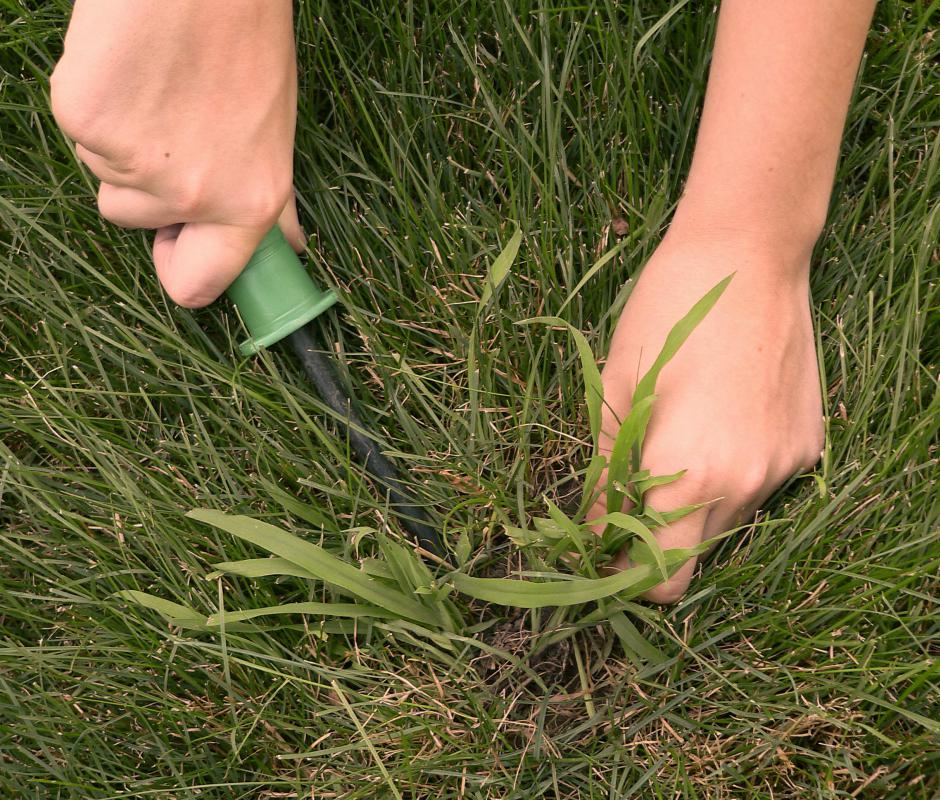At HomeQuestionsAnswered, we're committed to delivering accurate, trustworthy information. Our expert-authored content is rigorously fact-checked and sourced from credible authorities. Discover how we uphold the highest standards in providing you with reliable knowledge.
What is a Weeding Blade?
A weeding blade is a thin metal blade designed to get weeds out of tight places, and implements of many different names can serve this purpose. A gardening knife, pruning knife, Cape Cod Weeder – also known as a Yankee weeder or a crack weeder, a patio knife – also known as a Dutch patio knife, a Hori-Hori knife from Japan, and a Kirpi from India are some of the tools that can be used as a weeding blade. The shape and design of each type of weeding blade suits it for varying purposes. For plants like the dandelion, which can regenerate from a portion of the tap root, removal of the complete tap root is important to stem weed growth, and a tool that can reach all the way to the end and remove it is essential. Another consideration is handle length: most types of weeding blades characteristically have short handles, but some are available with a long handle so that the user can weed without bending or stooping.
Gardening Knife. Gardening knife is sometimes used as a generic term for any blade with a handle used in a garden. Other times, it refers to a specifically designed weeding blade or a multipurpose blade that includes weeding among several functions, for example, general pruning and cutting. Sometimes such a knife can also be designed for snagging, which means “trimming twigs and small branches from a tree,” or in other words, removing the bits that could snag you. Such a tool is sometimes called a snagging knife or a gardening/snagging knife. Given this breadth of meaning, only a general description is possible: a gardening knife has a sharp, straight or curved blade that may or may not fold into the handle for safe storage. The blade is often shaped like that of a typical pocketknife.

Pruning Knife. A pruning knife has a distinctive curved blade that looks something like a thick eyebrow. The curve of the blade is very pronounced, and the whole knife may be large or small depending on whether it’s intended for light work or heavy cutting. Because of its thin, sharp blade design, it can double as a weeding blade, provided the weed’s roots are not too deep.
Cape Cod Weeder, Yankee Weeder, or Crack Weeder. This weeding blade is easily identifiable by its design: it has a long wooden handle, into which a metal shaft with a 90-degree bend is inserted and out of which comes a teardrop-shaped blade. This tool can easily be run down the cracks in sidewalks or driveways to clear weeds or grass.
Patio Knife or Dutch Patio Knife. This distinctive blade is more or less L-shaped and forms a right angle on the outside, while having a curved edge on the interior, suiting it to a variety of cutting jobs. Its finely-pointed tip is another feature to make cleaning or weeding easy, whether between decking, patio bricks or stones, or concrete joints.
Hori-Hori Knife. This is a Japanese general utility knife that gardeners have adopted for a variety of horticultural tasks, weeding among them. Shaped something like a miniature dagger blade, with one straight edge with a bevel and the other edge serrated, this double-duty weeding blade can slice or saw.
Kirpi or Kirpi Weeder. This is a multi-purpose Indian gardening tool which can function as a weeding blade, among many other uses. The blade is shaped like the calf and foot of a human leg, with the smooth, S-curved back ending in the heel of the “foot” used as a hoe. The serrated, concave front that goes down the front of the “leg” and the top of the “foot” to the “toe” is useful for sawing. The “foot” itself, which comes to a curved point at the toe, is useful for digging out weeds that have lodged in cracks.
AS FEATURED ON:
AS FEATURED ON:











Discuss this Article
Post your comments